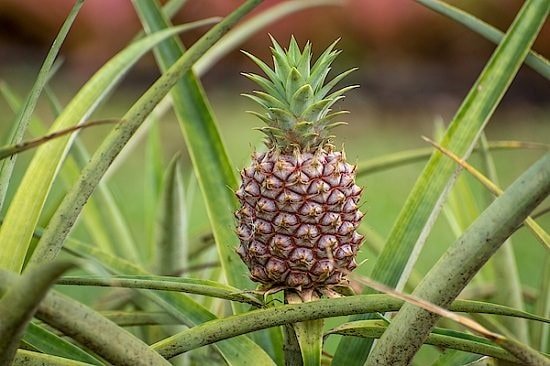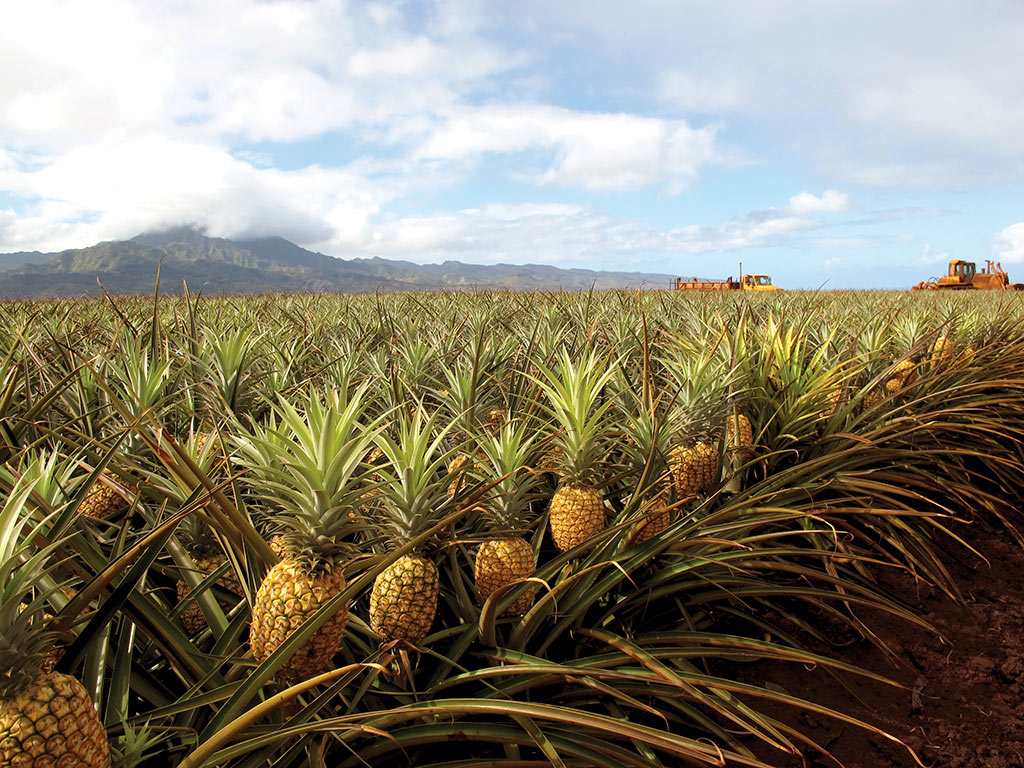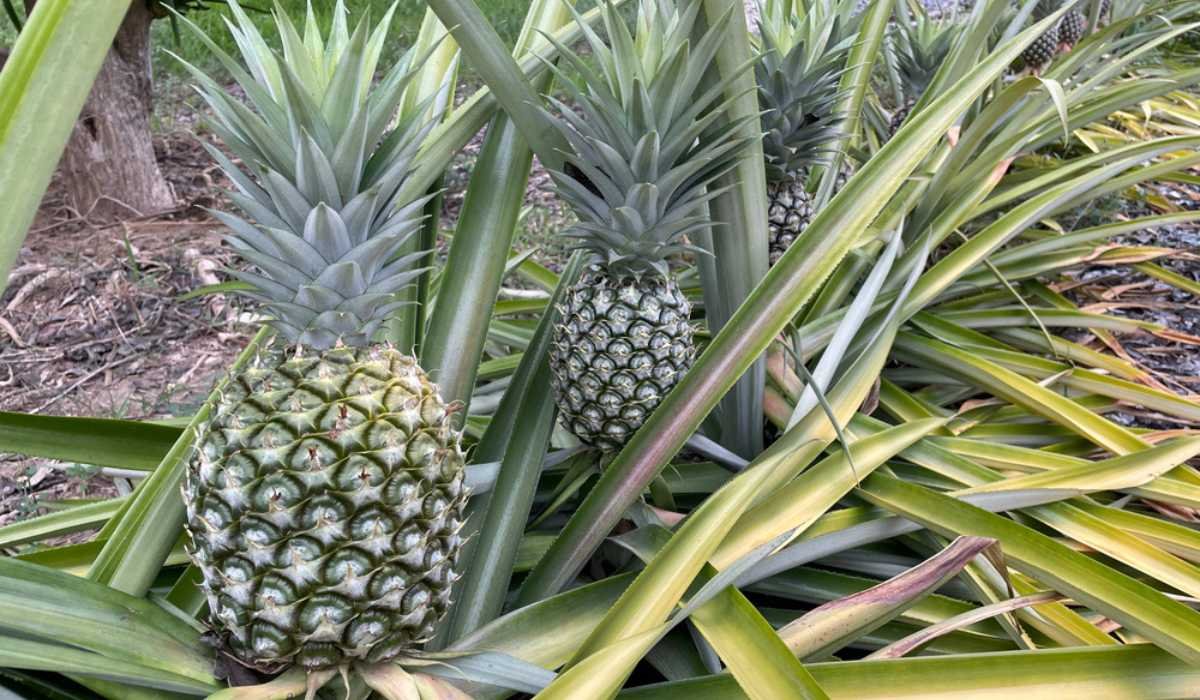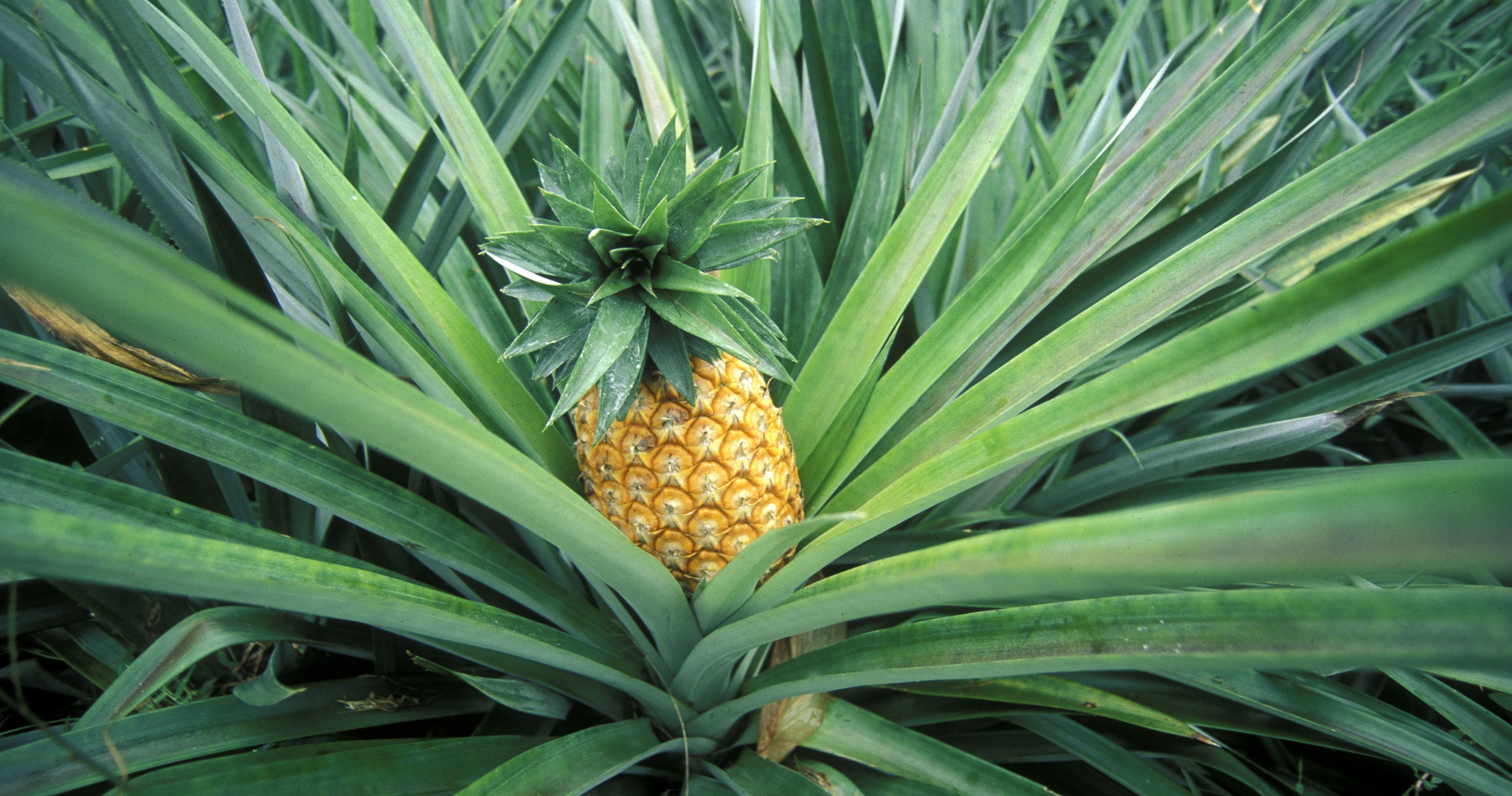Debunking the Myth: Where Do Pineapples Really Grow?
Pineapples are one of the most widely consumed tropical fruits in the world, yet many people are unsure about how they grow. A common misconception is that pineapples grow on trees, but this is not entirely accurate. In reality, pineapples are the edible fruit of a plant that belongs to the bromeliad family. While it’s true that some species of pineapples can grow quite tall, they do not grow on trees in the classical sense. Instead, they grow on a short stem that rises from the center of a tough, waxy leaf rosette.
The myth that pineapples grow on trees may have originated from the fact that some pineapple plants can grow up to 6 feet tall, with a sturdy stem that resembles a small tree trunk. However, this stem is actually a modified leaf stalk that supports the fruit and leaves of the plant. Unlike trees, pineapple plants do not have a single main trunk, but rather a collection of leaves and stems that grow from the center of the plant.
So, where do pineapples really grow? The answer is that they grow on a plant that is specifically designed to produce a single fruit. Pineapple plants are cultivated in tropical and subtropical regions around the world, where they thrive in warm, humid climates with plenty of sunlight. They are typically grown on plantations or in home gardens, where they are carefully tended to produce the delicious fruit that we all know and love.
Despite the myth that pineapples grow on trees, the reality is that they are a unique and fascinating fruit that grows on a specialized plant. By understanding how pineapples really grow, we can appreciate the complexity and beauty of the natural world, and enjoy the delicious fruit that is the result of this remarkable process.
How to Grow Pineapples: A Beginner’s Guide
Growing pineapples can be a rewarding and delicious experience, but it requires careful attention to the plant’s specific needs. To grow pineapples, you’ll need to provide the right climate, soil, and watering conditions. Pineapple plants thrive in warm, humid climates with average temperatures between 64°F and 90°F (18°C and 32°C). They can be grown indoors or outdoors, but outdoor plants will require protection from frost and extreme weather conditions.
In terms of soil, pineapple plants prefer well-draining, acidic soil with a pH between 5.5 and 6.5. You can create a suitable soil mix by combining peat moss, perlite, and vermiculite. Watering is also crucial, as pineapple plants require consistent moisture to produce fruit. Water your plant when the top inch of soil feels dry to the touch, and avoid getting water on the leaves or crown to prevent rot.
When it comes to fertilizing, pineapple plants benefit from a balanced fertilizer with a ratio of 10-10-10 (nitrogen-phosphorus-potassium). You can also add a small amount of magnesium and sulfur to promote healthy growth. Pruning is also essential to encourage fruiting and prevent the plant from becoming too leggy. Remove any dead or damaged leaves, and trim back the plant to maintain a bushy shape.
One common question that beginners ask is, “Do pineapples grow on trees?” The answer is no, pineapples grow on a plant that is specifically designed to produce a single fruit. By following these simple steps and providing the right conditions, you can grow your own delicious pineapple at home. With a little patience and care, you’ll be enjoying fresh pineapple in no time.
Here’s a step-by-step guide to get you started:
- Choose a healthy pineapple plant with a sturdy stem and bright green leaves.
- Plant the pineapple in a well-draining potting mix, and water thoroughly.
- Provide the right climate and lighting conditions, with average temperatures between 64°F and 90°F (18°C and 32°C).
- Water the plant consistently, and fertilize with a balanced fertilizer.
- Prune the plant regularly to encourage fruiting and prevent legginess.
By following these simple steps, you can grow your own delicious pineapple at home and enjoy the many benefits of this nutritious and versatile fruit.
The Anatomy of a Pineapple Plant
A pineapple plant is a fascinating and unique organism that has adapted to its environment in remarkable ways. One of the most distinctive features of a pineapple plant is its tough, waxy leaves. These leaves are designed to conserve water and protect the plant from extreme temperatures and dry conditions. They are also covered in tiny, sharp spines that help to deter herbivores and other predators.
The stem of a pineapple plant is short and stout, typically growing to a height of around 2-3 feet (60-90 cm). This stem is actually a modified leaf stalk that supports the fruit and leaves of the plant. The stem is also covered in tough, waxy leaves that help to protect the plant from damage.
At the base of the stem, you’ll find a tough, fibrous crown that is made up of tightly packed leaves. This crown is the heart of the pineapple plant, and it’s where the fruit grows. The crown is also where the plant stores its water and nutrients, allowing it to survive in dry and challenging conditions.
Despite the common misconception that pineapples grow on trees, the reality is that they grow on a plant that is specifically designed to produce a single fruit. The pineapple plant is a remarkable example of evolutionary adaptation, and its unique anatomy has allowed it to thrive in a wide range of environments.
One of the most interesting things about pineapple plants is their ability to produce multiple fruits. While most pineapple plants produce a single fruit, some varieties can produce multiple fruits on a single stem. This is because the plant is able to produce new crowns and stems, allowing it to produce multiple fruits over time.
Understanding the anatomy of a pineapple plant is essential for anyone who wants to grow their own pineapples. By knowing how the plant works, you can provide the right conditions and care to help it thrive. Whether you’re a seasoned gardener or just starting out, learning about the anatomy of a pineapple plant is a great way to appreciate the fascinating world of pineapple cultivation.
Pineapple Cultivation: A Brief History
Pineapple cultivation has a rich and fascinating history that spans over 3,000 years. The pineapple plant is native to South America, specifically in the area between southern Brazil and Paraguay. The indigenous people of this region, including the Tupi and Guarani tribes, were the first to cultivate pineapples for food and medicinal purposes.
The pineapple plant was introduced to Europe by Christopher Columbus on his second voyage to the New World in 1493. The plant quickly became popular among European colonizers, who brought it back to their homelands and began to cultivate it in greenhouses and tropical regions.
As European colonization expanded, pineapple cultivation spread to other parts of the world, including Africa, Asia, and the Pacific Islands. The plant proved to be highly adaptable and was able to thrive in a wide range of environments, from tropical rainforests to dry deserts.
One of the most significant events in the history of pineapple cultivation was the development of the Smooth Cayenne variety in the 19th century. This variety, which is still widely grown today, was bred specifically for its sweetness and low acidity, making it ideal for fresh consumption and canning.
Today, pineapple cultivation is a global industry, with major producers including Costa Rica, Brazil, and the Philippines. The plant is grown on large plantations and small farms, using a range of techniques and technologies to optimize yields and quality.
Despite the common misconception that pineapples grow on trees, the reality is that they are a highly adaptable and versatile plant that can thrive in a wide range of environments. By understanding the history and evolution of pineapple cultivation, we can appreciate the complexity and diversity of this fascinating plant.
The history of pineapple cultivation is a testament to the power of human ingenuity and the ability of plants to adapt to new environments. From its humble beginnings in South America to its current status as a global commodity, the pineapple plant has come a long way, and its story is still unfolding.
Common Misconceptions About Pineapple Growth
Despite the popularity of pineapples, there are many misconceptions about how they grow. One of the most common myths is that pineapples grow on trees. This myth likely originated from the fact that pineapple plants can grow quite tall, with some varieties reaching heights of over 6 feet. However, pineapples do not grow on trees in the classical sense. Instead, they grow on a short stem that rises from the center of a tough, waxy leaf rosette.
Another common misconception is that pineapples are a type of berry. While it’s true that pineapples are a type of fruit, they are not a berry in the botanical sense. Berries are fruits that have three distinct features: they have a fleshy exterior, a seed-filled interior, and they come from a single ovary in the flower. Pineapples do not meet these criteria, as they are actually a type of multiple fruit that is formed by the fusion of multiple ovaries in the flower.
Some people also believe that pineapples are a type of citrus fruit, but this is not true. While pineapples are often eaten fresh or used in desserts, they are not related to citrus fruits like oranges or lemons. Instead, pineapples are a type of tropical fruit that is native to South America.
Finally, some people believe that pineapples are difficult to grow, but this is not necessarily true. While pineapples do require a warm and humid climate to thrive, they can be grown in a variety of conditions. With the right care and attention, pineapple plants can be grown indoors or outdoors, and they can even be grown in containers.
By understanding the common misconceptions about pineapple growth, we can gain a deeper appreciation for the fascinating world of pineapple cultivation. Whether you’re a seasoned gardener or just starting out, learning about the unique characteristics and needs of pineapple plants can help you to grow delicious and healthy pineapples.
Pineapple Varieties: Exploring the Different Types
While many people are familiar with the typical pineapple variety found in most supermarkets, there are actually many different types of pineapples that are grown around the world. Each variety has its own unique characteristics, flavor profile, and texture, making them suitable for different uses and preferences.
One of the most widely grown pineapple varieties is the Smooth Cayenne. This variety is known for its sweet and tangy flavor, and is often used for fresh consumption and canning. It is also a popular choice for growing at home, as it is relatively easy to care for and can thrive in a variety of conditions.
Another popular pineapple variety is the Red Spanish. This variety is known for its sweet and slightly spicy flavor, and is often used for fresh consumption and juicing. It is also a popular choice for growing at home, as it is relatively easy to care for and can thrive in a variety of conditions.
The MD-2 variety is a hybrid pineapple that is known for its sweet and tangy flavor, and is often used for fresh consumption and canning. It is also a popular choice for growing at home, as it is relatively easy to care for and can thrive in a variety of conditions.
In addition to these popular varieties, there are many other types of pineapples that are grown around the world. Some of these varieties include the Kauai Sugarloaf, the Philippine Red, and the Singapore Red. Each of these varieties has its own unique characteristics and flavor profile, making them suitable for different uses and preferences.
When choosing a pineapple variety to grow or consume, it’s a good idea to consider the flavor profile and texture that you prefer. Some pineapple varieties are sweeter and more tender, while others are tangier and more fibrous. By choosing a variety that suits your preferences, you can enjoy the best possible pineapple experience.
It’s also worth noting that pineapples do not grow on trees, despite their common association with tropical trees. Instead, pineapples grow on a short stem that rises from the center of a tough, waxy leaf rosette. This unique growth habit makes pineapples a fascinating and versatile fruit that can be grown and enjoyed in many different ways.
Pineapple Care and Maintenance
Pineapple plants are relatively low-maintenance, but they do require some care and attention to thrive. One of the most important things to consider when growing pineapples is the soil quality. Pineapple plants prefer well-draining, acidic soil with a pH between 5.5 and 6.5. They also require a balanced fertilizer that is high in potassium to promote healthy fruiting.
Watering is also crucial for pineapple plants. They require consistent moisture, especially when they are producing fruit. However, overwatering can be detrimental to the plant, so it’s essential to ensure that the soil is not too wet or dry.
Pruning is another important aspect of pineapple care. Pineapple plants produce suckers, which are small plants that grow from the base of the mother plant. These suckers can be removed and replanted to create new pineapple plants. Pruning also helps to promote healthy growth and fruiting.
Pest management is also essential for pineapple plants. Common pests that can affect pineapple plants include mealybugs, scale, and spider mites. Regularly inspecting the plants and using organic pest control methods can help to prevent infestations.
Finally, pineapple plants require protection from extreme weather conditions. They are sensitive to frost, so they should be protected from frost damage during the winter months. They also require protection from strong winds and intense sunlight.
By following these care and maintenance tips, you can help to ensure that your pineapple plants thrive and produce delicious fruit. Remember, pineapples do not grow on trees, but rather on a short stem that rises from the center of a tough, waxy leaf rosette. With proper care and attention, you can enjoy a bountiful harvest of fresh pineapples.
Conclusion: Separating Fact from Fiction
In conclusion, the idea that pineapples grow on trees is a common misconception that has been debunked. Pineapples actually grow on a short stem that rises from the center of a tough, waxy leaf rosette. By understanding the unique characteristics and needs of pineapple plants, we can appreciate the fascinating world of pineapple cultivation.
Throughout this article, we have explored the anatomy of a pineapple plant, the history of pineapple cultivation, and the different varieties of pineapples. We have also addressed common misconceptions about pineapple growth and provided expert advice on how to care for pineapple plants.
By separating fact from fiction, we can gain a deeper understanding of the world around us. In the case of pineapple growth, it is clear that pineapples do not grow on trees. Instead, they grow on a unique and fascinating plant that has been cultivated for centuries.
Whether you are a seasoned gardener or just starting out, we hope that this article has provided you with a newfound appreciation for the world of pineapple cultivation. By understanding the unique characteristics and needs of pineapple plants, you can grow your own delicious pineapples and enjoy the many benefits of this fascinating fruit.
So, the next time you bite into a juicy pineapple, remember that it didn’t grow on a tree. Instead, it grew on a unique and fascinating plant that has been cultivated for centuries. By appreciating the complexity and beauty of pineapple cultivation, we can gain a deeper understanding of the world around us.









/BabyPina-JennParker-e8b74fda6de046f1bea9a708dc9d7f53.jpg)